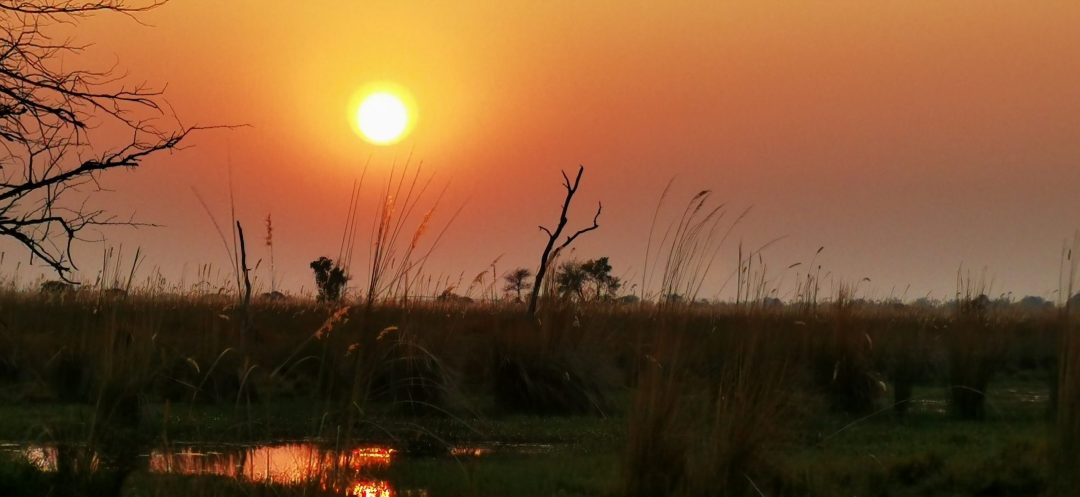Botswana, officially the Republic of Botswana (Setswana: Lefatshe la Botswana), is a landlocked country in Southern Africa. Botswana is topographically flat, with up to 70 percent of its territory being the Kalahari Desert. It is bordered by South Africa to the south and southeast, Namibia to the west and north, and Zimbabwe to the northeast. It is connected to Zambia across the short Zambezi River border by the Kazungula Bridge.
Explore & Experience|Botswana
Have a look at the official Botswana Tourism website for the main attractions: https://botswanatourism.co.bw/
Explore Botswana!

Unbounded Namibia Safaris & Tours
About Botswana
About Botswana
Botswana, officially the Republic of Botswana (Setswana: Lefatshe la Botswana), is a landlocked country in Southern Africa. Botswana is topographically flat, with up to 70 percent of its territory being the Kalahari Desert. It is bordered by South Africa to the south and southeast, Namibia to the west and north, and Zimbabwe to the northeast. It is connected to Zambia across the short Zambezi River border by the Kazungula Bridge.
A country of slightly over 2.3 million people, Botswana is one of the most sparsely populated countries in the world. About 11.6 percent of the population lives in the capital and largest city, Gaborone. Formerly one of the world’s poorest countries—with a GDP per capita of about US$70 per year in the late 1960s—it has since transformed itself into an upper-middle-income country, with one of the world’s fastest-growing economies.
The Tswana ethnic group were descended mainly from Bantu-speaking tribes who migrated southward of Africa to modern Botswana around 600 AD, living in tribal enclaves as farmers and herders. In 1885, the British colonised the area and declared a protectorate under the name of Bechuanaland. As decolonisation occurred, Bechuanaland became an independent Commonwealth republic under its current name on 30 September 1966. Since then, it has been a representative republic, with a consistent record of uninterrupted democratic elections and the lowest perceived corruption ranking in Africa since at least 1998.
The economy is dominated by mining, cattle, and tourism. Botswana has a GDP (purchasing power parity) per capita of about $18,113 as of 2021, one of the highest in Africa. Botswana is the world’s biggest diamond producing country. Its relatively high gross national income per capita (by some estimates the fourth-largest in Africa) gives the country a relatively high standard of living and the highest Human Development Index of continental Sub-Saharan Africa. Botswana is the first African country to host Forbes 30 Under 30 and the 2017 Netball World Youth Cup.
Botswana is a member of the African Union, the Southern African Customs Union, the Southern African Development Community, the Commonwealth of Nations, and the United Nations. The country has been adversely affected by the HIV/AIDS epidemic. Despite the success in programmes to make treatments available, and to educate the populace about how to stop the spread of HIV/AIDS, the number of people with AIDS rose from 290,000 in 2005 to 320,000 in 2013. : A20 As of 2014, Botswana had the third-highest prevalence rate for HIV/AIDS, with roughly 20% of the population infected. However, in recent years the country has made strides in combatting HIV/AIDS, with efforts being made to provide proper treatment and lower the rate of mother-to-child transmission.
Geography:
At 581,730 km2 (224,607 sq mi) Botswana is the world’s 48th-largest country. It is similar in size to Madagascar or France. It lies between latitudes 17° and 27° south, and longitudes 20° and 30° east.
Botswana is predominantly flat, tending towards gently rolling tableland. Botswana is dominated by the Kalahari Desert, which covers up to 70% of its land surface. The Okavango Delta, one of the world’s largest inland river deltas, is in the north-west. The Makgadikgadi Pan, a large salt pan, lies in the north.
The Limpopo River Basin, the major landform of all of southern Africa, lies partly in Botswana, with the basins of its tributaries, the Notwane, Bonwapitse, Mahalapye, Lotsane, Motloutse and the Shashe, located in the eastern part of the country. The Notwane provides water to the capital through the Gaborone Dam. The Chobe River lies to the north, providing a boundary between Botswana and Namibia’s Zambezi Region. The Chobe River meets with the Zambezi River at a place called Kazungula (meaning a small sausage tree, a point where Sebitwane and his Makololo tribe crossed the Zambezi into Zambia).
Secure your spot
Book Now!
Experience a blockbuster combination of sublime landscapes that will make you feel like you’re on another planet, some of the best wildlife viewing on the continent, a host of fascinating desert-adapted plants and animals and jaw-dropping natural wonders make Namibia a country you’ll never forget.









